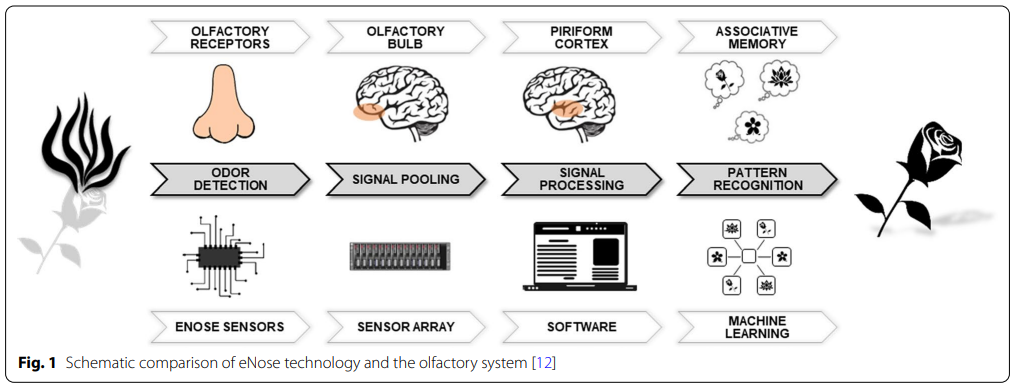The smell of lung disease: a review of the current status of electronic nose technology
REVIEW
Take home message: eNose technology offers a powerful, non-invasive tool for real-time diagnosis and phenotyping of respiratory diseases. By analyzing breath profiles as composite biomarkers, it provides rapid, accurate insights that support personalized medicine and improve clinical decision-making.
Summary
Chronic lung diseases often present with non-specific symptoms, complicating diagnosis and delaying treatment. An emerging diagnostic approach involves analyzing exhaled breath, which contains volatile organic compounds (VOCs) linked to metabolic and inflammatory processes in the lungs. This method can be performed using electronic noses (eNoses), devices equipped with sensor arrays that mimic the human olfactory system, detecting specific patterns in breath profiles or “breathprints.”
The eNose technology has shown promise across a range of respiratory diseases, including asthma, chronic obstructive pulmonary disease (COPD), cystic fibrosis (CF), interstitial lung disease (ILD), and lung cancer. It provides a non-invasive, real-time diagnostic tool capable of distinguishing between healthy and diseased breath profiles, aiding in early detection and personalized treatment approaches.
Key Applications:
- Asthma & COPD: eNoses have demonstrated good accuracy in differentiating asthma from COPD, showing potential for subtyping phenotypes based on breath profiles. This technology may outperform traditional tests like spirometry, particularly in identifying airway inflammation.
- Cystic Fibrosis: Breath analysis using eNose technology has been used to identify CF exacerbations and differentiate between bacterial colonization statuses, including pseudomonas infections.
- Interstitial Lung Disease (ILD): Preliminary studies indicate high sensitivity and specificity in identifying idiopathic pulmonary fibrosis (IPF) versus other types of ILD, suggesting a role for eNose in screening and monitoring disease progression.
- Lung Cancer: Early results are promising for using eNoses to detect lung cancer based on distinct breath profiles, with potential applications in screening programs for high-risk populations like smokers.
Future Directions:
Integrating machine learning algorithms has improved the accuracy of breath analysis. With ongoing advancements and validation efforts, eNose technology could revolutionize respiratory diagnostics, making non-invasive, point-of-care testing a reality for early disease detection and tailored therapeutic monitoring.




